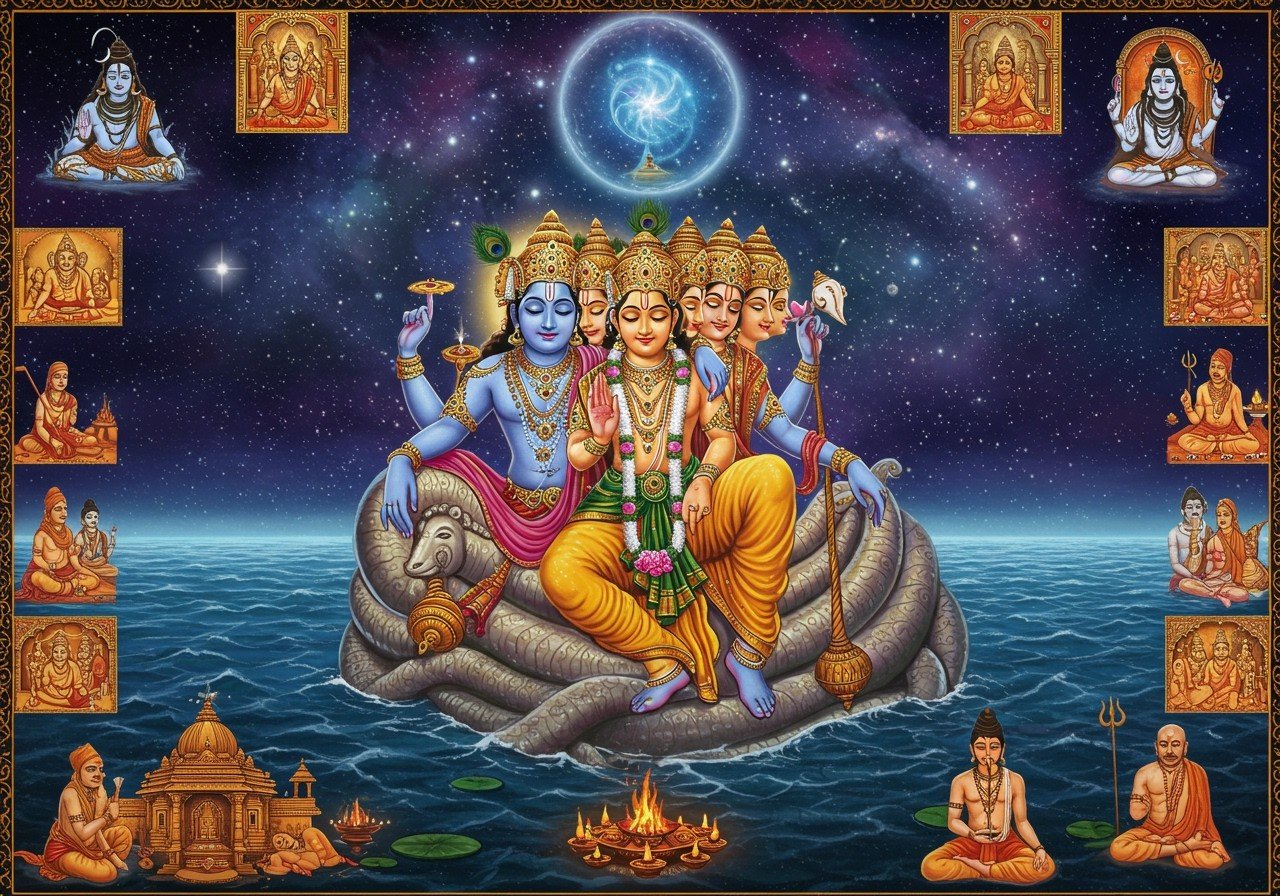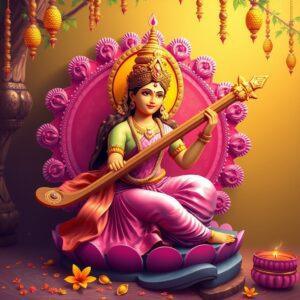
Hindu Synthesis, also known as Hindu Syncretism, represents the intricate interweaving of diverse beliefs, rituals, and philosophical schools within Hinduism. This dynamic fusion has shaped the religion’s evolution over millennia, reflecting India’s rich cultural and spiritual heritage.
Understanding Hindu Synthesis
Hindu Synthesis is the assimilation of various religious and cultural elements into a unified tradition. Unlike religions with a single founder or doctrine, Hinduism embraces plurality. Ancient texts like the Vedas, Upanishads, and Puranas, along with philosophical schools such as Vedanta, Yoga, and Bhakti, contribute to this synthesis. Regional variations and local deities further enrich this tapestry.
The Historical Unfolding of Hindu Synthesis
The evolution of Hindu Synthesis spans from the Vedic period to the present day, influenced by:
- Indus Valley Civilization (c. 3300-1300 BCE): Provided the early foundation for Hindu practices, laying the groundwork for later developments.
- Aryan Migrations (c. 1500-500 BCE): Introduced Vedic culture, including the Sanskrit language and the foundational scriptures of Hinduism, significantly shaping its development.
- Buddhist and Jain Philosophies (c. 6th Century BCE – ): Impacted Hindu thought during the Mauryan and Gupta periods, leading to the development of new schools of thought and practices within Hinduism.
- Bhakti and Sufi Movements (c. 12th Century CE – ): Integrated devotional practices, emphasizing personal relationships with the divine and contributing to the emotional depth of Hindu worship.
- Colonial Period (c. 16th Century CE – ): Witnessed the rise of reform movements like Brahmo Samaj and Arya Samaj, which sought to reinterpret and modernize Hindu traditions in response to Western influence.
Core Elements of Hindu Synthesis
Fundamental elements comprising Hindu Synthesis include:
- Dharma (Righteousness): Moral duties and responsibilities that guide individual and social conduct, shaping ethical behavior within Hindu society.
- Karma (Action): The principle of cause and effect, where actions have consequences that influence future lives, playing a central role in Hindu ethics and the cycle of rebirth.
- Moksha (Liberation): The ultimate spiritual goal of liberation from the cycle of rebirth, achieved through various paths such as knowledge, devotion, and selfless action.
- Rituals, Festivals, and Pilgrimages: Foster unity and continuity, strengthening community bonds and transmitting traditions across generations.
- Epic Narratives (Ramayana and Mahabharata): Convey moral values and ethical principles through captivating stories, providing guidance and inspiration for Hindu life.
- Temples and Sacred Spaces: Serve as central points for Hindu practice, offering spaces for worship, community gatherings, and spiritual reflection.
Interpretations of Hindu Synthesis
Scholars and philosophers have offered various interpretations:
- Swami Vivekananda (1863-1902): Emphasized universal spirituality and the underlying unity of all religions, promoting a broader understanding of Hindu Synthesis.
- Dr. S. Radhakrishnan (1888-1975): Explored the philosophical aspects of Hindu Synthesis, highlighting its intellectual depth and contribution to global thought.
- Wendy Doniger (1940- ): Analyzed the historical contexts and cultural influences that shaped Hindu Synthesis, providing valuable insights into its development.
Theological debates on monism, dualism, and pluralism persist within Hindu thought. Contemporary gurus and spiritual leaders continue to interpret and disseminate Hindu teachings, adapting them to modern contexts.
Hindu-Muslim Syncretism in India
Hindu-Muslim syncretism has deep cultural roots in India, evident in shared shrines and cultural practices. This confluence reflects a complex interplay of religious and social forces. While some nationalist organizations may utilize syncretism for political purposes, the genuine expression of shared traditions demonstrates a rich history of interfaith interaction.
Poojn.in: Your Gateway to Hindu Tradition
Poojn.in, India’s leading online store for cultural goods and services, offers a wide selection of products to enhance your understanding and practice of Hindu traditions. Explore our collection of puja items, sacred texts, and devotional art, and discover the richness of Hindu Synthesis.
- Bel Malas: Enhance your meditation and connection with Lord Shiva with our authentic Bel Malas. Available in various sizes and styles.
- Tulsi Malas: Deepen your devotion to Lord Krishna and Radha with our handcrafted Tulsi Malas, made with genuine Tulsi wood.
- Shiva Lingams: Bring the divine presence of Lord Shiva into your home with our beautifully crafted Shiva Lingams, perfect for puja and meditation.
Visit poojn.in today to explore our diverse collection and deepen your connection with Hindu traditions.
Conclusion
Hindu Synthesis stands as a testament to Hinduism’s rich tapestry of traditions, beliefs, and practices. This dynamic fusion demonstrates the religion’s ability to adapt and evolve while honoring its ancient roots. Understanding Hindu Synthesis allows us to appreciate the profound cultural and spiritual heritage of India. As we embrace the convenience of online resources like poojn.in, we continue to preserve and celebrate these timeless traditions.


